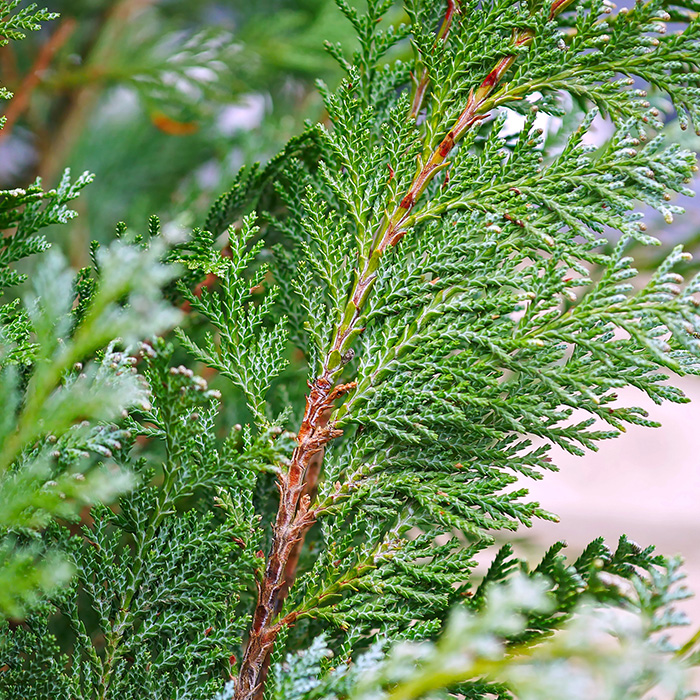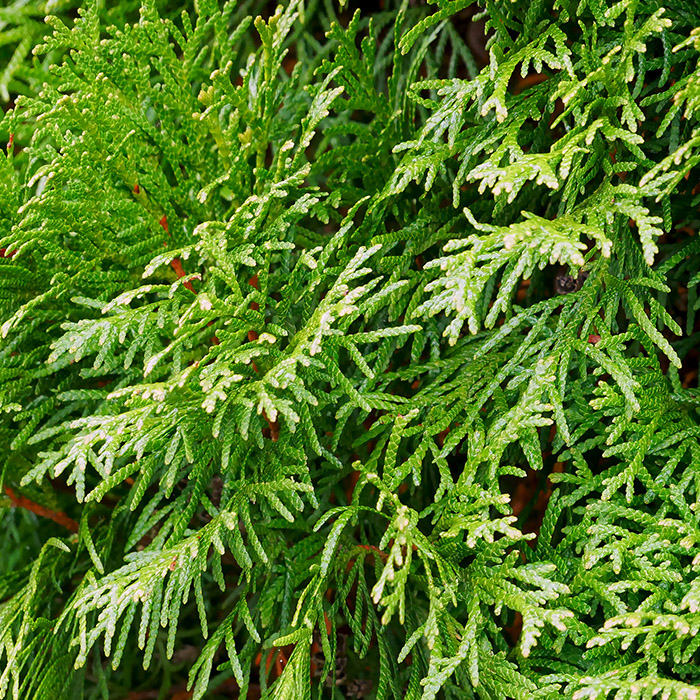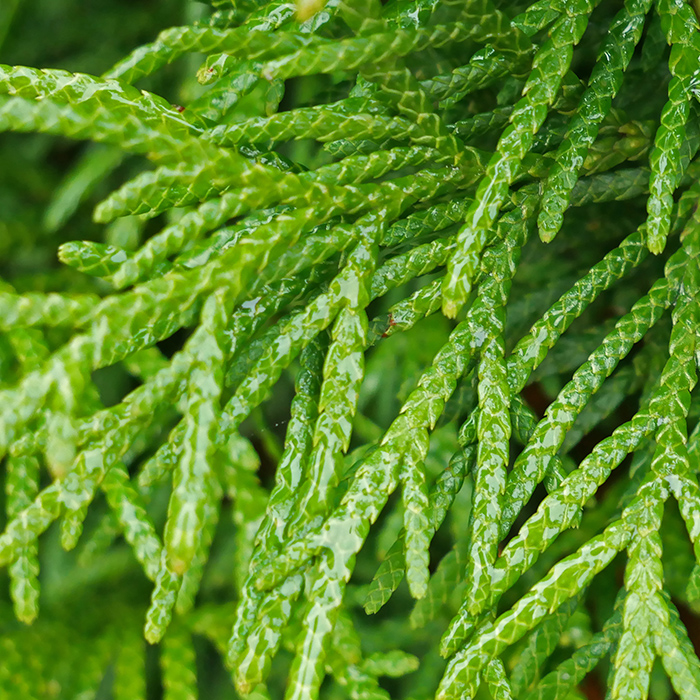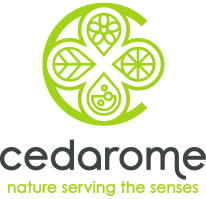Description
Thuja plicata is an essential oil sourced from the northwestern part of Canada along the Pacific Coast. This oil is obtained from the needles and twigs of the Western Red Cedar tree through steam distillation. It is a colorless to pale yellow liquid with a woody and aromatic scent.
Olfactive Profile
Woody, thujonic, fresh, herbaceous.
Woody
Fresh
Flavor Profile
Not Food grade.
- Details
- Technical Sheet
- Downloads
- Sources
Details
Botany:
Thuja plicata, is an evergreen coniferous member of the Cupressaceae family. It can reach heights between 3 to 7 meters, and is the largest tree in the Cypress family. Its lifespan is exceptional since the oldest trees can reach 800 years. It features horizontal branching with sprays of scale-like dark green aromatic foliage, its bark is reddish-brown with small, upright, light brown seed cones.
Ethnobotany:
Designated as the Tree of Life due to its exceptional longevity, the Red Cedar is considered one of the oldest trees existing on the North American continent. It also takes its name as the Tree of Life because the Indigenous Peoples used it as an inexhaustible source of topical care. Moreover, its red wood; light, soft and practically rot-proof, was used by the Indigenous People to build their homes and canoes, and to carve totems.
Uses:
Applications include fine fragrance et cosmetics.
Technical Sheet
Botanical name: Thuja plicata
Botanical family: Cupressaceae
Accepted synonyms: Arborvitae, Western Red, Giant Thuja, Giant Red Cedar
Common names: Red Cedar
Origin: Pacific Coast of North America
Source: Canada
Cultivation Method: Wild harvested
Harvest period: May to October
Plant part used: Leaves and twigs
Method of extraction: Steam distillation
Main components: Thujone, Sabinene, Camphene, α-Pinene, I-Limonene, Terpinen-4-ol
CAS: 68917-35-1 / 94334-32-4
INCI: Thuja plicata leaf oil
FEMA: Not applicable
EC: 305-105-8
Appearance: Colorless to pale yellow liquid with a characteristic odor
Certifications and Declarations:


- Certificate of Analysis
- Safety Data Sheet
- Natural Statement
- Origin Statement
- GMO-Free
- Fragrance allergens
- No Animal Testing
- Prop 65
Downloads
Sources
BRIT – Native American Ethnobotany Database. (n.d.). Naeb.brit.org. http://naeb.brit.org
Integrated Taxonomic Information System. (2019). Itis.gov. http://www.itis.gov
Kricher, J. C., Morrison, G., National Audubon Society, National Wildlife Federation, & Tory, R. (1998). A
Field guide to Eastern forests : North America. Houghton Mifflin.
Marie-Victorin, Frère F.É.C, Luc Brouillet, Rouleau, E., Goulet, I., & Hay, S. (2002). Flore laurentienne. G.
Morin.
Moerman, D. E. (1998). Native American ethnobotany. Timber Press.
Petrides, G. A., Wehr, J., National Audubon Society, National Wildlife Federation, & Tory, R. (1998). A field
guide to eastern trees : eastern United States and Canada, including the Midwest. Houghton Mifflin.
Welcome to the PLANTS Database | USDA PLANTS. (2016). Usda.gov. http://plants.usda.gov






